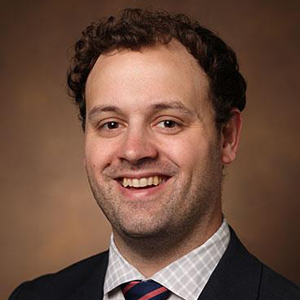A team of investigators at Vanderbilt University Medical Center has identified health disparities in diagnosis of pediatric thyroid cancer, with young Black and Hispanic patients presenting with larger tumors and an increased likelihood of having distant disease.
The findings, presented at the American Society of Pediatric Otolaryngology (ASPO) 2022 Annual Meeting, highlight the need to better understand causes for these disparities and to intervene to improve outcomes. Their research findings have been submitted for publication.
“In younger patients, thyroid cancer is most common in the teenage years and, in contrast to the disease in adult patients, it tends be found incidentally by observant pediatricians,” said Ryan Belcher, M.D., assistant professor and surgical co-director of Vanderbilt’s Pediatric Thyroid Nodule and Cancer Program. “Because thyroid cancer is rarer in pediatric patients, disparities in pediatric cancer are comparatively under-researched.”
Revealing Findings
Belcher and colleagues at Monroe Carell Jr. Children’s Hospital at Vanderbilt used a large national cancer database to study pediatric patients who underwent a thyroidectomy for thyroid papillary, medullary and follicular carcinoma between 2007 and 2016.
A total of 1,730 children with primary thyroid carcinoma were included in the study. The team used census data to classify patients by race and ethnicity (white, Black and Hispanic), insurance status (insured/non-Medicaid, Medicaid and uninsured), and socioeconomic status.
The variation in disease presentation and treatment emerged after the researchers controlled for demographics and tumor characteristics.
“We found that Black and Hispanic children tend to have more aggressive disease at presentation, with disease in their lymph nodes or with larger tumors,” Belcher said.
“Despite having larger tumors and more aggressive disease at presentation, they’re having less complex surgery performed on them, particularly Hispanic patients, compared with their white counterparts.”
In white patients, the average tumor size was 20 millimeters, while it was 30 millimeters for Black patients and 27 millimeters for Hispanic patients.
Disease stage also differed significantly by race, with Black and Hispanic patients presenting with a later stage, more distant disease than white patients. Hispanic patients were 36 percent more likely to be diagnosed at an advanced stages than white patients, and Black and Hispanic patients were more likely to have larger tumors at diagnosis — 150 percent and 58 percent, respectively. Uninsured patients were 32 percent less likely to receive postoperative adjuvant therapy.
“It’s extremely unfortunate that these children may not be getting the care that they need,” Belcher said. “This study highlights the importance of patients being treated at high-volume, experienced centers such as Monroe Carell Jr. Children’s Hospital at Vanderbilt to ensure they have access to multidisciplinary care that may not be available at smaller centers.”
Vanderbilt Otolaryngology resident and first author of the abstract and research article Rahul K. Sharma, M.D., won a 2022 ASPO Award for the research, underscoring the importance of the study.
Looking Ahead
Future studies planned by the Vanderbilt Pediatric Thyroid Nodule and Cancer team include collaborating with other researchers to investigate the genetic basis of pediatric thyroid cancer and whether any particular groups of patients with thyroid cancer have different genetic characteristics that may be driving some of the differences observed in the study.
“It is important to determine the environmental contributors and genetic components or changes in the biology of the tumor itself that may be leading to some of these disparities,” Belcher said.






